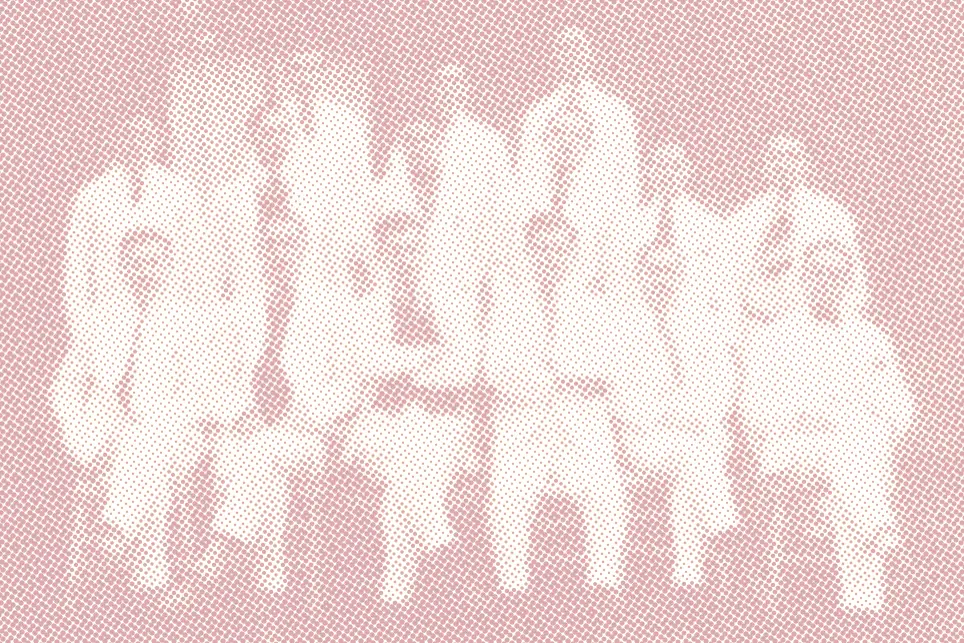I’m in the back corner of a Hollywood cafe and I just took a hit off my vape pen. For focus, mainly, and to get some creativity flowing. No one seemed to notice or care, plus the vapor smells more like rose than like weed. The pen itself is pink, now sitting in the front pocket of my purse with my earbuds, chapstick, car keys, and a small jar of cannabis salve for my tendinitis.
At home, I have a ziplock baggie of shrooms hidden in my bedroom. They’re tucked away with a square of tin foil wrapped around some MDMA powder. The baggie, the foil, the hiding spot—it’s the definition of a “drug stash.” The last time I treated cannabis this way was my freshman year of college nearly a decade ago.
Things have changed since then, at least here in California. My designer weed feels like an accessory to my makeup bag, and I can’t remember the last time someone gave me bud in a ziplock. I know it’s only a matter of time before psychedelics go the same way. But do we want them to?
Granted, microdosing psychedelics is on its way to becoming almost as socially acceptable as vaping cannabis before work. As of a 2013 National Survey on Drug Use and Health, nearly 7% of the American population had taken MDMA, while on any given weekend, dozens of ayahuasca ceremonies are happening in lofts, yoga studios, and private homes all over Brooklyn, Los Angeles, the Bay Area, and beyond.
Read: Why I Quit Microdosing LSD
Psychedelics are fast re-entering the mainstream, with prudent visionaries, scientists, and academics like Rick Doblin, founder of the Multidisciplinary Association of Psychedelic Studies, Michael Pollan, author of How to Change Your Mind, and Johns Hopkins’ researcher Roland Griffiths, among others, leading the way.
Some argue that the psychedelic movement is where the cannabis movement was only a decade ago—and they have a point. California pioneered medical marijuana in 1996 and, since then, 33 states have legalized cannabis for medical or adult use, the FDA has approved the first cannabis-based medicine for prescription, and cannabis has become a central issue for some candidates on the campaign trail. In many ways, the cannabis plant’s route to legalization serves as both a template for psychedelics, as well as an example of what not to do along the way.
How to Grow Shrooms Bundle
Take Both of Our Courses and Save $90!
In many ways, the cannabis plant’s route to legalization serves as both a template for psychedelics, as well as an example of what not to do along the way.
Though disproven as a gateway drug, cannabis indeed is a gateway plant, introducing consumers to a plant-based approach to wellness. Having experienced the power of cannabis therapy, those who may otherwise have feared psychedelic “drugs” are seeing their merit.
The approach to cannabis legalization has been threefold. The most obvious route has been local, with state measures to decriminalize or legalize cannabis for medical or recreational purposes. Key players in state markets like California’s, luring the brightest minds in marketing, have rebranded cannabis as a wellness and lifestyle product. Once embraced only by hippies, cannabis has been sterilized enough to lure even the most conservative squares (like John Boehner) into the industry. Congress is catching on, too, now considering a record number of bills to deschedule or otherwise promote cannabis law reform. The federal approach comprises the second route to reform.
Meanwhile, the third prong is through FDA rescheduling. Currently, Sue Sisley, president and principal investigator at the Scottsdale Research Institute, has partnered with MAPS to study cannabis flower as a treatment for veterans with PTSD. When the research is complete, the idea is for cannabis, in its organic form, to become an affordable, prescription medication.
“One of the things that the cannabis movement has done right is having operated in multiple levels of government,” says Noah Potter, author of The Psychedelic Law Blog and an attorney with cannabis firm Hoban Law Group. “There’s no central organizing on cannabis, but it has happened organically as people have stepped up in different capacities as journalists, as physicians, and as entrepreneurs, [while] for better and for worse, there’s a diversity of messaging on cannabis.”
Similar to organizations like the National Organization for the Reform of Marijuana Laws or the Drug Policy Alliance, MAPS, a nonprofit which has sponsored much of the recent, pioneering psychedelic research, has strong political leanings.
Yet MAPS and other research nonprofits are not alone in seeking to make psychedelics legal, as medications. There’s been concern among some key players in the psychedelic community that COMPASS Pathways—a for-profit company whose research has recently been put on the fast-track by the FDA to develop psilocybin therapy for depression—is an indication that people looking to profit from psychedelics, rather than ensure their accessibility, are getting into the space. The company is backed by major venture capitalists including Peter Thiel and Michael Novogratz.

We’re now seeing at least a two-pronged approach to psychedelics, mirroring cannabis. The first is government-approved research on MDMA for PTSD and psilocybin for anxiety, addiction, and other conditions. The second is state- and city-level initiatives in places like Denver and Oregon to decriminalize or legalize psilocybin. According to Oakland’s Decriminalize Nature campaign, more than 55 cities now want to replicate the city’s initiative, which passed in June, to decriminalize all naturally-occurring psychedelics.
But as Potter mentioned, the “diversity of messaging” has its drawbacks, too: Without a central tenant to either the cannabis or psychedelic movement, there’s no way to ensure these industries grow to be accessible or equitable.
Read: Canada Now Has Psilocybin Dispensaries
How is it that in the cannabis industry, for instance, thousands of Drug War victims (mainly people of color) remain incarcerated for minor cannabis violations, while white men (those like Boehner) make headway in yet another increasingly corporate American industry?
“You combine cannabis with capitalism, in which cannabis is now just a consumer product, and it’s now just all about the money,” Potter says.
Consequently, we’re now in a place where even black market farmers and gray market dispensary owners, who for decades lived under the looming threat of having their livelihoods taken from them, are bemoaning legalization amid burdensome regulations and an inability to compete with Big Marijuana. And whereas women once comprised 36% of executives in the cannabis industry, the mainstreaming of pot has had the side effect of reducing that statistic by about 9%, according to a 2017 survey by Marijuana Business Daily. With a number of industry execs having never even gotten high themselves, it’s hard not to wonder how the cannabis industry digressed so far from the morals of its original, grassroots movement.
And that’s just the question we should be asking about the coming psychedelic industry: How can the commercial market uphold the values of community and compassion so often reinforced when a person is under the influence of these entheogenic plants?
While, admittedly, there are far fewer prisoners of the War on Psychedelics than the War on Weed, equity in the case of psychedelics means not only including marginalized groups in the nascent industry, but ensuring psychedelic medicine as a right, rather than a privilege. Also, says Potter, to go about psychedelic legalization solely for the purpose of providing medicine feeds into the prohibitionist paradigm that these substances may still be unsafe outside that paradigm; it neglects their merit in recreational or spiritual purposes, the line between both often being hazy.
There remains a need, within the movement, to uphold the right to cognitive liberty, the pursuit of happiness, and the innate yearning for spiritual connection—all alongside the need for better medicine. At the same time, we need to ensure that the movement and industry give due respect to the indigenous cultures that have been using these substances, safely and wisely, for generations. “You now have potential exploitation of these substances for-profit and first-world psychedelic tourism,” says Potter.
Ultimately, psychedelic legalization would be preferable to decriminalization, Potter argues, because it would allow psychedelics to be regulated and make a larger dent in the Drug War. But, in order for psychedelics to actually become integrated into society, the medical-spiritual-commercial divide will have to shift, too. If done properly, says Potter, “that will have profound implications for everything we do.”
Madison Margolin is DoubleBlind’s Co-Founder and Managing Editor.
Related posts:
Interested in having a psychedelic experience, but don't know where to start? Get our definitive guide on trusted legal retreat centers, clinical trials, therapists, and more.



